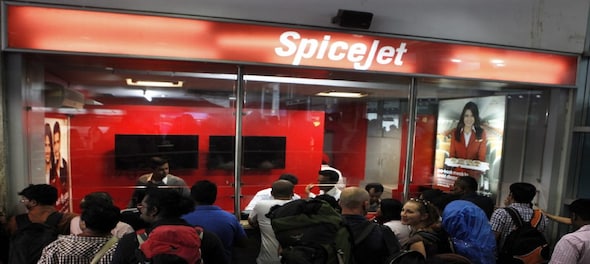
Remember, December 17, 2014? Airports across India were filled with angry Spicejet passengers, waiting for their flights to depart. Television cameras streamed chaotic scenes from major airports.
Amidst these events, hectic parlays were underway in the aviation ministry. SpiceJet had come to a ground stop. The six-month-old Narendra Modi government had its first challenge at hand – to deal with a possible closure of an airline and the accompanying job losses during a time when the government was propping up the Make in India agenda and sprucing its pro-business image.
In a dramatic turn of events, Ajay Singh, who re-started the airline in 2005 from its earlier avatar of ModiLuft and sold it to the Sun Group in 2010, was back at the helm of affairs. The airline had changed hands again and this time it was akin to Tony Fernandes buying Air Asia for RM 1 and liabilities.
SpiceJet returned to the skies. Contracts were renegotiated, payback timelines were extended, funds were pumped in. Most importantly, oil prices crashed – giving the airline some much-needed breather.
Full circle in the skies
But five years to this day, it is déjà vu all over for the airline. There are many reasons to be worried about SpiceJet, though mercifully there have been no defaults or lease terminations or notices. While the airline has recorded over 90 percent occupancy for the last five years, media reports say that the airline is left with less than Rs 100 crore in cash for operations. Compare that to SpiceJet’s arch rival IndiGo, the Indian market leader, has over Rs 10,000 crore in cash.
The dichotomy between high passenger loads and a potentially crippling cash crunch is not the only perplexing thing about SpiceJet. The airline was the biggest beneficiary of slots vacated by Jet Airways, after the suspension of that airline’s services in April 2019.
However, what could have well been a memorable December to remember could well become a forgettable December — similar to the one five years ago. Spicejet inducted the most number of aircraft in its fleet compared with other Indian airlines. This additional capacity was a precursor to get additional slots.
While the airline did benefit with the doubling of departures at Mumbai – India’s financial capital and its busiest airport —the airline posted huge losses in the second quarter of FY20, the first full quarter after the fall of Jet Airways.
SpiceJet reported an operating loss of Rs 282.3 crore and a net loss of Rs 462.6 crore. While Q2 has been a traditionally weak quarter, this year could have been different due to lack of capacity growth in the market and the additional impetus to Spicejet – thanks to a level playing field with IndiGo at both Mumbai and Delhi. The airline reduced its departures in the second quarter of FY20, primarily to get its former Jet Airways aircraft re-configured and re-painted.
What happened to SpiceJet?
What could have potentially led to this? Where does the airline go from here?
While the initial quarters after the revival have been good, intense competition, a sudden spurt in capacity addition without adequate support in the market and dropping fares have been the main reasons why the airline finds itself in a tight spot. Recently, Ajay Singh – the Chairman and MD of the airline compared airline industry to telecom. While there are similarities in both the sectors, aviation is aspirational while mobile has become a necessity.
Interestingly, the airline has been without a CEO all along since it resurrected and its commercial head has recently jumped the ship. The rate at which the airline has grown, does it require a full time CEO?
What next?
The big question is how SpiceJet can keep the cash flowing. The increased departures and capacity have not been able to give the airline pricing power in the market. A sluggish market and slowing economy negated the benefit that airline would have grabbed because of a flattish growth in capacity.
The airline recently talked about partnering with Ras Al Khaimah for setting up a hub and eventually an airline. As things would have it, within days of this announcement, there have been announcements of setting up of a low-cost carrier at Abu Dhabi, one of the sister Emirates of Ras Al Khaimah. Will this subsidiary eventually help Spicejet survive in the form of merger or act an investment vehicle to pump in the much-needed funds? The answers are not clear now.
Codeshares and international flights have not been a way to success for Indian carriers in the past. Kingfisher Airlines ran out of cash just ahead of its much-anticipated entry into OneWorld. Jet Airways was gung-ho about its then new-found love for widebody expansions, but it was short-lived.
Creating a hub in the Middle East and codesharing with one of the best airlines in the world sound like a plan but it isn’t something which is drastically different than what anybody else would do. In the end, what matters for survival is cash and clearly the airline is short of it, at the moment.
First Published: Dec 17, 2019 10:50 AM IST
Check out our in-depth Market Coverage, Business News & get real-time Stock Market Updates on CNBC-TV18. Also, Watch our channels CNBC-TV18, CNBC Awaaz and CNBC Bajar Live on-the-go!


Lok Sabha Election: Re-elections at a Ajmer booth after presiding officer misplaces register of voters
May 2, 2024 4:54 PM
Rahul will be forced to take out 'Congress Dhoondho Yatra' after June 4: Amit Shah in Bareilly
May 2, 2024 4:36 PM

